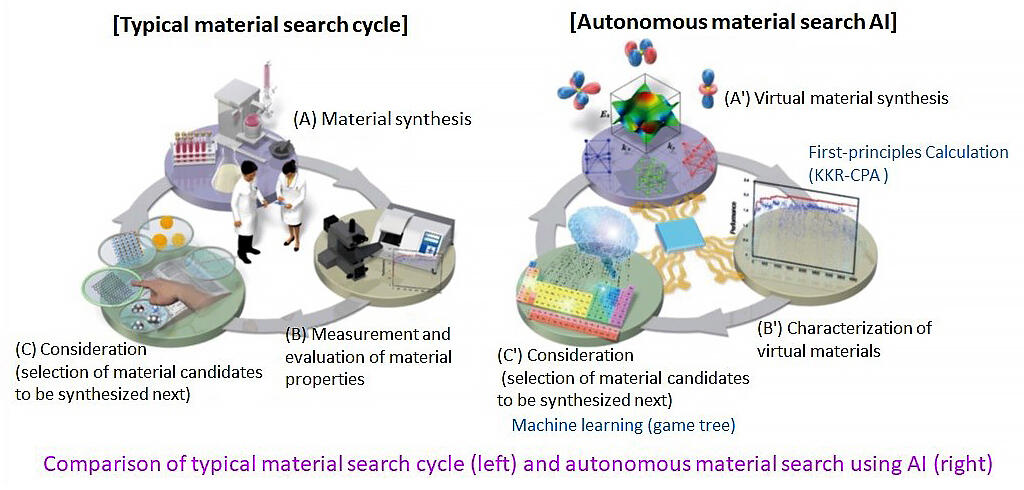The search for a new material typically starts with synthesizing the material, measuring and evaluating its properties, selecting the next material candidate to be synthesized, and finally, synthesizing the candidate material once again, constituting a cycle (Fig. 1. (left)). This process cycle allows developers to gain insights and discover materials with better properties. However, the high-performance materials that have required development in recent years possess complicated structures, making the search increasingly challenging.
Yuma Iwasaki, a specialized intensive research specialist from AIST (currently a senior researcher with NIMS), and others, have developed an AI algorithm (autonomous material search AI) which searches for new materials that grow autonomously. This AI algorithm accumulates knowledge by virtually repeating the steps of synthesis, evaluation, and consideration of the material candidates through a computer (Fig. 1. (right)).
By searching for a magnetic alloy material with a high magnetization using this AI algorithm, it was discovered that when a small amount of iridium (Ir) or platinum (Pt) is added to an iron-cobalt (FeCo) alloy, the alloy acquires a magnetization higher than that of the Fe0.75Co0.25 alloy, which is defined as the upper limit of performance (Slater-Pauling limit). The researchers also succeeded in synthesizing this alloy and clarifying the mechanism behind its properties.
Since this algorithm can be applied to the search for various material systems, acceleration of overall material development with efficiency can be realized. The developed algorithm is also expected to contribute to deepening scientific knowledge by presenting researchers with unusual new materials that are otherwise not possible to formulate and synthesize by conventional methods.





